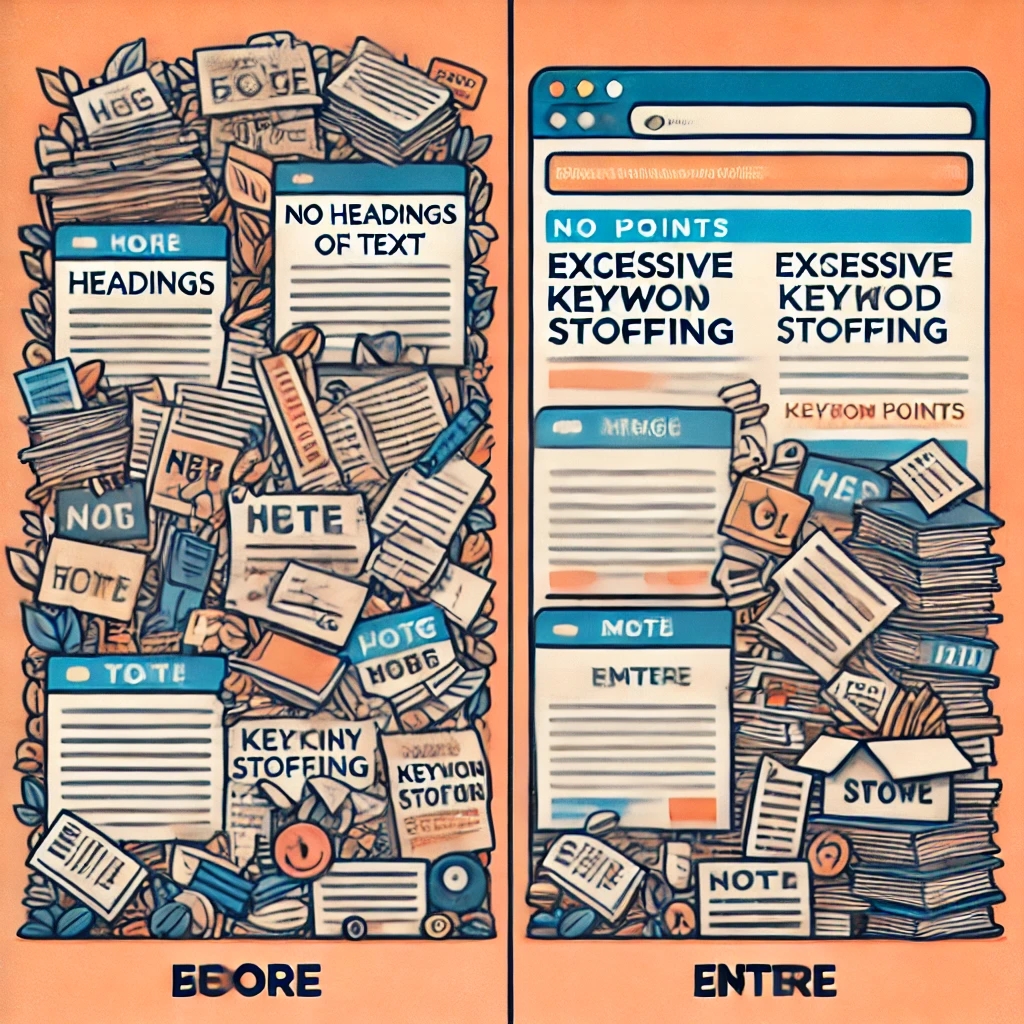
Let’s be honest: writing a blog post that actually ranks on Google can feel overwhelming. There’s so much advice out there—keywords, meta tags, backlinks, and more. But here’s the good news: you don’t need to be an SEO expert to create a blog post that ranks well. You just need to focus on a few key things and keep it simple.
In this guide, I’ll walk you through the steps to write an SEO-friendly blog post that both Google and your readers will love. No complicated terms, just straightforward tips you can start using right away.
1. Start with the Right Keyword
Before you write anything, you need to know what people are searching for. This is where keywords come in. Think of keywords as the phrases people type into Google when they’re looking for information.
- Use Free Tools: Tools like Google Keyword Planner, Ubersuggest, or even Google’s “People also ask” section can help you find keywords.
- Pick Long-Tail Keywords: These are longer, more specific phrases like “easy ways to start a blog for beginners.” They’re easier to rank for because they’re less competitive.
- Think Like Your Reader: What would you search for if you were looking for this topic? That’s your keyword.
2. Write a Catchy Title
Your title is the first thing people see, so make it count. It should be clear, interesting, and include your main keyword.
- Keep it short and sweet (under 60 characters).
- Use words like “How to,” “Tips,” or “Best” to grab attention.
- Example: “How to Write a Blog Post That Ranks on Google (Simple Tips).”
3. Hook Readers with a Strong Intro
Your introduction is your chance to grab attention and keep readers on your page. Start by addressing their problem or question, and let them know you have the solution.
- Keep it short and to the point.
- Include your keyword naturally in the first few sentences.
- Example: “Struggling to get your blog posts to rank on Google? You’re not alone. In this post, I’ll share simple tips to help you write SEO-friendly content that actually works.”
4. Make Your Content Easy to Read
No one wants to read a giant block of text. Break your content into small, digestible chunks to keep readers engaged.
- Use headings (H2, H3) to organize your post.
- Write short paragraphs (2-3 sentences max).
- Use bullet points or numbered lists to make key points stand out.
- Add images, charts, or videos to make your post more visually appealing.
5. Optimize for SEO (Without Overdoing It)
SEO doesn’t have to be complicated. Here are a few simple ways to optimize your post:
- Use Your Keyword Naturally: Include your main keyword in your title, headings, and throughout the post, but don’t stuff it in everywhere.
- Write a Meta Description: This is the short description that shows up under your title in Google. Keep it under 160 characters and include your keyword.
- Add Alt Text to Images: Describe your images using keywords so Google can understand them.
- Link to Other Posts: If you’ve written related content, link to it. This helps Google see your post as part of a bigger topic.

6. Write for People, Not Just Google
Yes, SEO is important, but your readers come first. Write content that’s helpful, engaging, and easy to understand.
- Answer their questions clearly and thoroughly.
- Use simple language—avoid jargon or overly technical terms.
- Add a personal touch. Share your own experiences or examples to make your post relatable.
7. Make It Mobile-Friendly
More than half of web traffic comes from mobile devices, so your blog post needs to look good on phones and tablets.
- Use a responsive design (most blogging platforms like WordPress do this automatically).
- Keep paragraphs short and images optimized for fast loading.
8. Promote Your Post
Even the best blog post won’t rank if no one sees it. Share it on social media, email it to your subscribers, and ask friends or colleagues to share it too.
- Social Media: Post it on platforms like Twitter, LinkedIn, or Facebook.
- Email: Send it to your email list with a catchy subject line.
- Engage with Readers: Respond to comments and questions to keep the conversation going.
9. Keep It Fresh
Google loves up-to-date content. If your post starts to lose traffic, go back and update it.
- Add new information or examples.
- Refresh outdated stats or links.
- Republish it with a new date if needed.
10. Be Patient
SEO takes time. Don’t expect your post to rank #1 overnight. Keep creating great content, promoting it, and optimizing it, and you’ll see results over time.
Final Thoughts
Writing an SEO-friendly blog post doesn’t have to be complicated. Focus on creating content that helps your readers, use keywords wisely, and follow these simple tips to optimize your post. Remember, the goal is to write for people first and Google second. If you do that, the rankings will follow.
So, what are you waiting for? Start writing your next blog post today and watch it climb the Google rankings! and don’t forget to mention your views on comment section.
